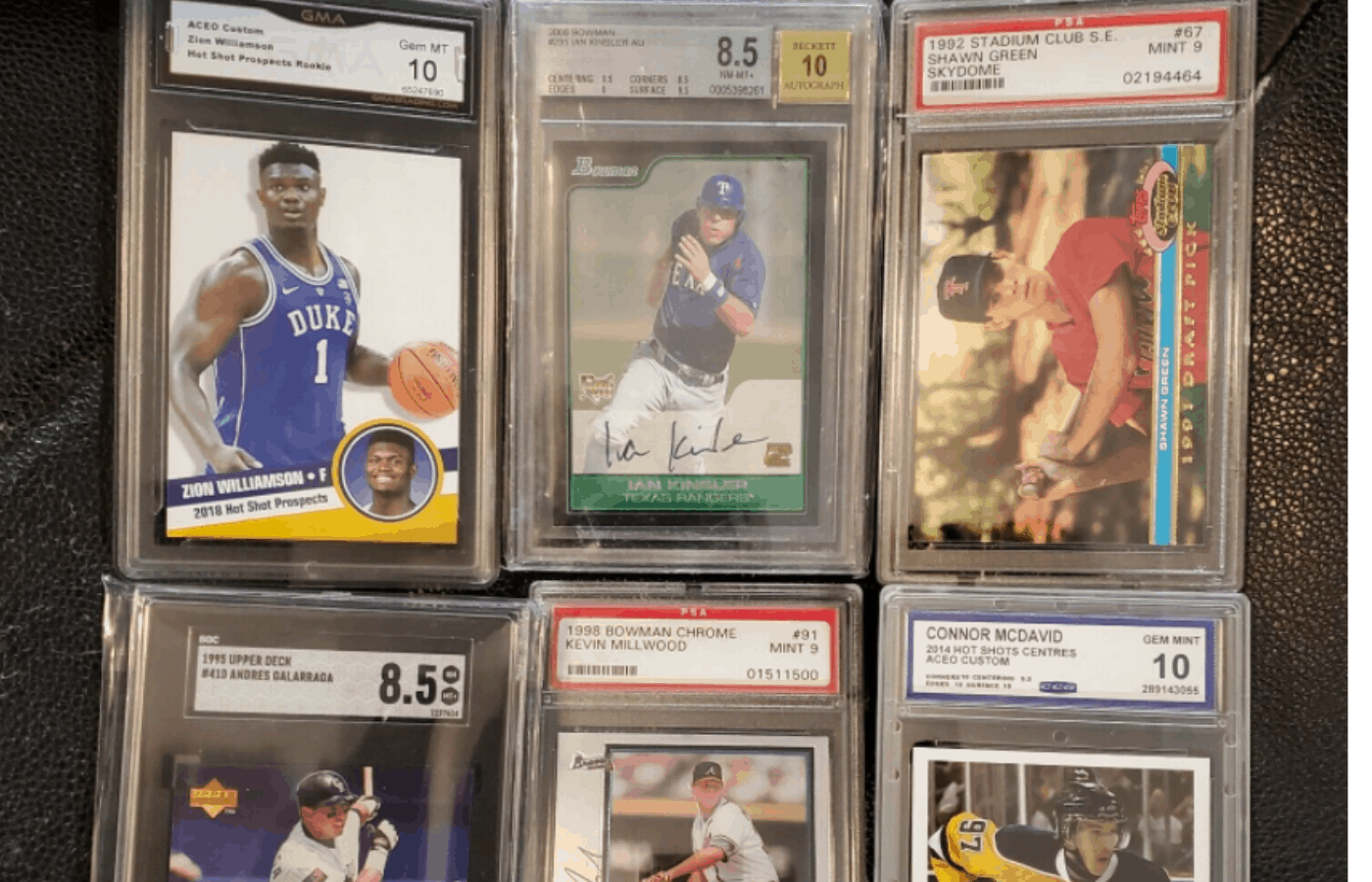There are a few methods that you can utilize to become a sports card grader. The industry is not specifically regulated and relies on the integrity of the card graders themselves. Luckily, there are a few strategies to gain extensive knowledge of the card grading system.
You first need to become very knowledgeable about the sports card grading system. Two of the leaders in the industry, Professional Sports Authentication (PSA) and Beckett’s have published guidelines online for sports card grading.
You can also join a program to gain experience and learn more in depth about the sports card industry. GMA Sports Authentication offers one of these programs. This opportunity allows you to experience the business and begin to build a reputation as a sports card grader, given that you have prior knowledge of the industry.
How Do I Become a Sports Card Grader?
After following the one or both of the previously mentioned steps, you can continue to build your knowledge of the industry. Having extensive knowledge of the card grading standards is critical to success in this field. Sports card journals report on news in the industry so that you can stay up to date and continue to develop your knowledge base.
In addition, you can also attend sports card shows to experience the industry work. These are great events to continue to gain an understanding of the standards, as well as network with professionals for mentorship and training.
Following the process of gaining knowledge of the industry, you are free to begin your career in the field through beginning through a program, or starting your career from the bottom up. There is some freedom in the industry to determine the specific path your career will take in this industry.
How Do You Become a PSA Grader?

Once you have the experience, 1-3 years recommended, then you are well on your way to becoming a PSA Card Grader. You need a keen and meticulous attention to detail, and of course, good eyesight.
Your odds of getting a job with PSA are higher the closer you live to a grading facility. Even with many jobs shifting to working from home during the recent times, Card Graders are required to work on site in a grading facility. No cards are permitted to leave the site.
Another requirement that goes hand in hand with having a great attention to detail is the ability to work efficiently. Due to high demand, graders have a very large backlog of cards to be assessed. Working quickly, but diligently, is a key to being an effective grader.
Each Grading organization has their own specific criteria for their graders. As part of the hiring process, you may have to take one or several ‘”tests” that determine your expertise, speed, and overall performance when grading a set of test cards.
You are rated on how closely your grading is to what an expert determined about the same card. The closer you are, the better you are rated for the test.
If you have your own collection, as card graders are encouraged to have, it’s good practice to try ang grade your own card, then send it in for PSA to grade it themselves. You can then compare how you did to the official PSA grading.
You can apply to become a Card Grader on the PSA website. Through their site, you can fill out and submit your application. Be sure, as with any application, to include all relevant experience you have with cards, collecting, and grading.
Related: How to Get Cards Graded for Free
How Much Do Sports Card Graders Make?
Professional Card Graders salaries range from $16,000 – $35,000, depending on experience, tenure, and performance. Statistics show that even though many apply and are hired for the positions, very few decide to stick with it as a full-time job.
To view current prices and inventory stock of blaster boxes, click here to check them out on Amazon.
Can I Grade My Own Cards?
Self-grading is a normal part of being a collector, but it would be a conflict of interest for you to professionally grade your own cards. To make sure gradings are fair and impartial, it is best practice to have your cards inspected by one of the major grading companies.
Self-grading is most commonly used when accessing the card yourself before getting it professionally inspected, to give yourself a better idea of what the official grading may be.
How Are Sports Cards Graded?
Sports Cards are graded on a variety of different criteria. These criteria include, but at not limited to; presence of scratches on face or back of card, quality of card image, presence of stains or discoloration, presence of bends or breaks, sharpness of corners and edges, number of notches on edges, presence of defects or printing errors, centering of images on card, etc.
Each card is inspected with a magnifying tool, examining every surface, edge, and detail for quality and signs of damage. Once a card has been thoroughly inspected, the findings are recorded and used to determine the grade.
The grading scale starts at the bottom with Poor condition, which is your garage-sale variety card with lots of wear and tear, and goes all the way up to Gem Mint condition, which is a virtually perfect card.
You can see the PSA grading scale on their website HERE, which includes example pictures and descriptions of each card grade.
Some PSA graded cards also have what is called a Qualifier, which is used to identify a specific condition of the card. Examples of this are Writing Marks (MK), MIscuts (MC), Off-Center (OC), and Stain (ST). For the most part, Qualifies detract from the quality of the card, and usually result in a lower grade.
Most of the cards you will inspect as a grader will not be Mint Condition, super rare cards. Those are very rare. You will most commonly deal with mid-range quality cards, with little bits of wear and tear on them.
Final Thoughts
If you are an avid collector, or are interested in becoming one, then Sports Card Grading will be an unavoidable part of the experience. Though not centrally regulated, the major Grading Companies adhere to very similar set of guidelines for their grading processes.
Although being a collector is fairly common amongst Sports Card Graders, it is not a requirement. Anyone with good enough eyesight and a great attention to detail can become a Sports Card Grader. The work is slow, precise, and meticulous. It is certainly not for everyone, but the high demand can be quite alluring for those stuck at home.
The best way to start on the path to become a Sports Card Grader is you practice, practice, practice! The more experience you have, the better you become and the more likely you are to be hired by one of the major grading companies. There are several programs, such as the one offered by GMA Sports Authentication, that are great opportunities to gain experience.
Keeping up on Forums, attending shows, and reading the Sports Card News Journals are all good ways to stay informed and continually improve your skills. Connecting with other professionals and collectors is also a great way to form your network, where you can share ideas and compare notes on different cards and grading scales.


